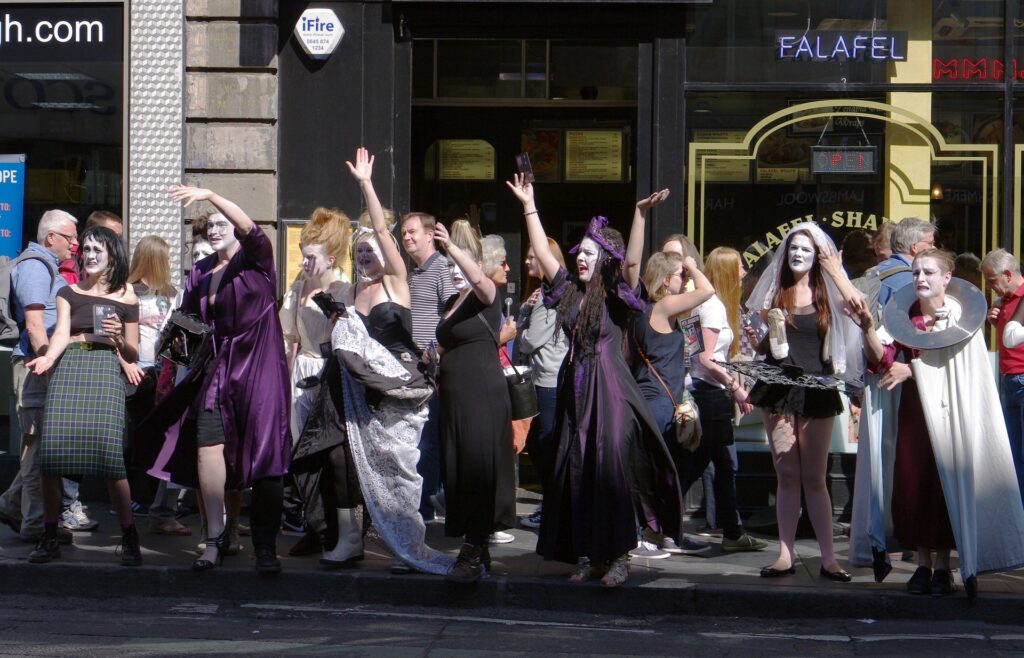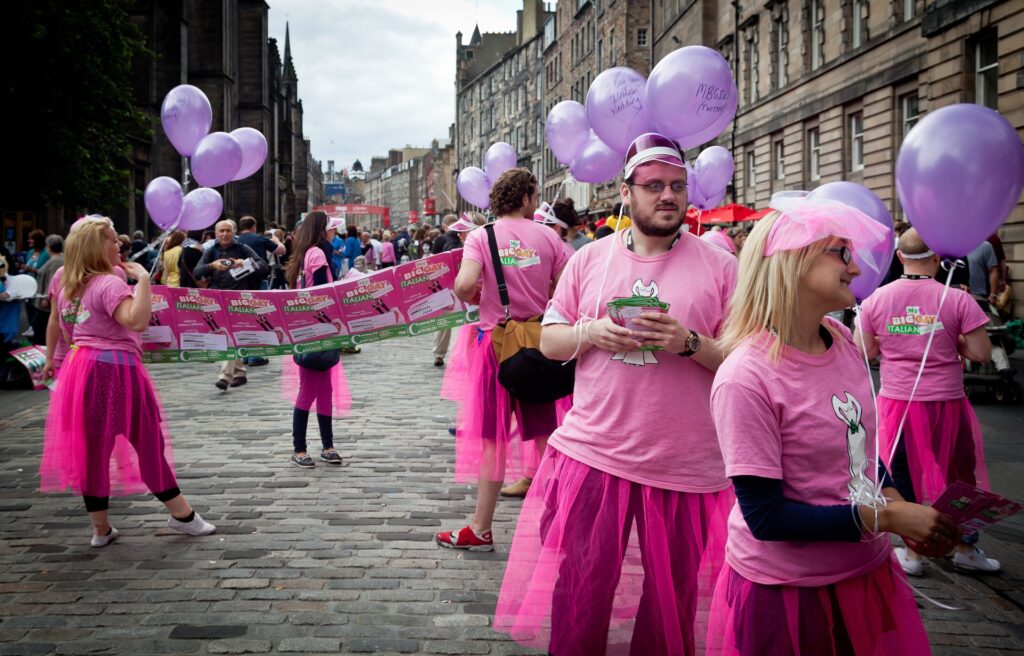The Edinburgh Festival Fringe
Introduction
The Edinburgh Fringe Festival, established in 1947 as a counterpoint to the Edinburgh International Festival, has evolved into the largest performance arts festival globally. Taking place every August in Edinburgh, it boasted a staggering 59,600 performances of 3,841 unique shows across 322 venues in 2019, spanning 25 days. Renowned historian and former chairman of the board Michael Dale credits the Festival with elevating Edinburgh’s global standing more than any other event, trailing only behind the Olympics and the World Cup in terms of worldwide ticket sales.
History of Festival Fringe

The Edinburgh Festival Fringe is a three-week performing arts festival held in Edinburgh every August. The origins of this festival date back to 1947. That year, eight theatre groups came to perform at the Edinburgh International Festival, although they were not officially invited. These eight theatre groups are considered the first founders of the Fringe. However, one significant name, Robert Kemp, stands out among them.
Robert Kemp is an inspired pioneer of the Edinburgh Fringe. Born in Glasgow, Scotland, in 1908, Kemp had a distinguished theatrical career. He gained recognition as a writer, critic, and producer. Kemp spearheaded the movement that gave rise to the Edinburgh Fringe and promoted the performances of alternative theatrical companies in Edinburgh. His vision and leadership have helped the Fringe achieve its current success.
The Edinburgh International Festival was an attempt to celebrate and enrich European cultural life following WWII. Despite not being part of the official program, these artists staged their shows on the Festival’s outskirts, giving rise to the term ‘fringe’ and our name, the Edinburgh Festival Fringe. Since this spontaneous artistic movement started, millions of people have visited the Edinburgh Festival Fringe to create and enjoy works of art of all kinds.
Year after year, more artists followed suit, and in 1958, in response to the success of this growing trend, the Festival Fringe Association was formed. The Association formalized the existence of the performing community, provided information to artists, published the Fringe program, and set up a central ticket office.
The Society’s founding purpose is consistent with the ethos that brought these theatre companies to Edinburgh in 1947: the Society will not oversee the festival program. This policy is still at the heart of our Festival today, and it means that we proudly welcome anyone who wants to tell our story and anyone who has a venue willing to host them.
Celebrities at Festival Fringe
The Edinburgh Festival Fringe has been a turning point in the careers of many young artists. Many amateur artists who performed at the Festival later became world-famous. Here are some of the world-famous artists who have become renowned for their Fringe performances;
Rowan Atkinson: British comedian and actor best known for his character Mr. Bean.
Emma Thompson: Academy Award-winning British actress and screenwriter.
Hugh Laurie: British actor and musician best known for his role as Dr. Gregory House in House M.D.
Stephen Fry: British comedian, writer, actor and presenter.
Catherine Tate: British comedian and actress, The Catherine Tate Show star.
Eddie Izzard: Famous British comedian, actor and activist.
Billy Connolly: Scottish comedian, musician and actor.
Miranda Hart: British comedian and actress who created and starred in the sitcom Miranda.
Tim Minchin: Australian comedian, musician and entertainer.
Simon Pegg: British actor, comedian, and screenwriter who has appeared in films such as Shaun of the Dead and Hot Fuzz.
What Can You Witness at the Festival Fringe?
At the Festival Fringe, audiences can witness a wide range of performances in theatre, dance, comedy, music, performing arts, and more. The program includes events ranging from traditional theatre to street performances, stand-up comedy, and contemporary dance shows. Audiences can choose from various shows to cater to all preferences and tastes.
During the festival, Festivalrgh’s historic streets and squares host a variety of street performances by artists. These performances surprise the audience and give them fun moments.
At the Festival Fringe, you go beyond being an art audience. Here, you can participate in the show by participating in interactive activities and interacting with the artists. In addition, workshops and talks organized throughout the festival allow art lovers to gain a deeper understanding of the performing arts.
The Edinburgh Festival Fringe is also an opportunity to wander the streets, meet new people, taste local delicacies, and explore Edinburgh’s historical and cultural heritage. You can meet art lovers from all over the world and make long-lasting friendships.

Statistics
- Edinburgh Festival Fringe hosts around 25,000 artists and over 2 million visitors worldwide each year.
- In 2019, Festival Fringe saw over 59,600 performances over 25 days and 3,841 different shows in 322 different venues.
- The festival attracted over 2 million visitors, significantly contributing to Edinburgh’s tourism industry.
- In 2019, the Fringe’s contribution to the economy was estimated at around £250 million.
- The number of Fringe participants in 2019 included more than 25,000 artists worldwide.
- The number of Fringe shows staged in 2019 increased by 5% compared to the previous year, breaking a record.
- Fringe’s 322 different venues in 2019 included various theatres, churches, pubs, pubs, and streets across the city during the festival.
- Over the 25 days of the Fringe in 2019, the number of nuFestivalvisitors staying in Edinburgh was roughly equivalent to the city’s population in an average year.
- The Festival Fringe is estimated to have the highest global ticket sales of any significant event, second only to the Olympics and the World Cup.
- Festival Fringe has been organized annually since 1947 and will be held for the 77th time this year.
Summarize
The Edinburgh Festival Fringe is one of the world’s largest theatre festivals, celebrating the diversity and freedom of the arts. The Festival promotes creativity by supporting independent festivals and theatre groups. It attracts millions of people to Scotland’s capital each year, demonstrating the power and unifying effect of the arts.










